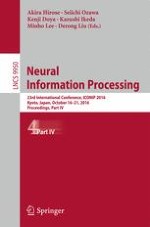2016 | OriginalPaper | Chapter
Information Maximization in a Feedforward Network Replicates the Stimulus Preference of the Medial Geniculate and the Auditory Cortex
Author : Takuma Tanaka
Published in: Neural Information Processing
Publisher: Springer International Publishing
Activate our intelligent search to find suitable subject content or patents.
Select sections of text to find matching patents with Artificial Intelligence. powered by
Select sections of text to find additional relevant content using AI-assisted search. powered by
